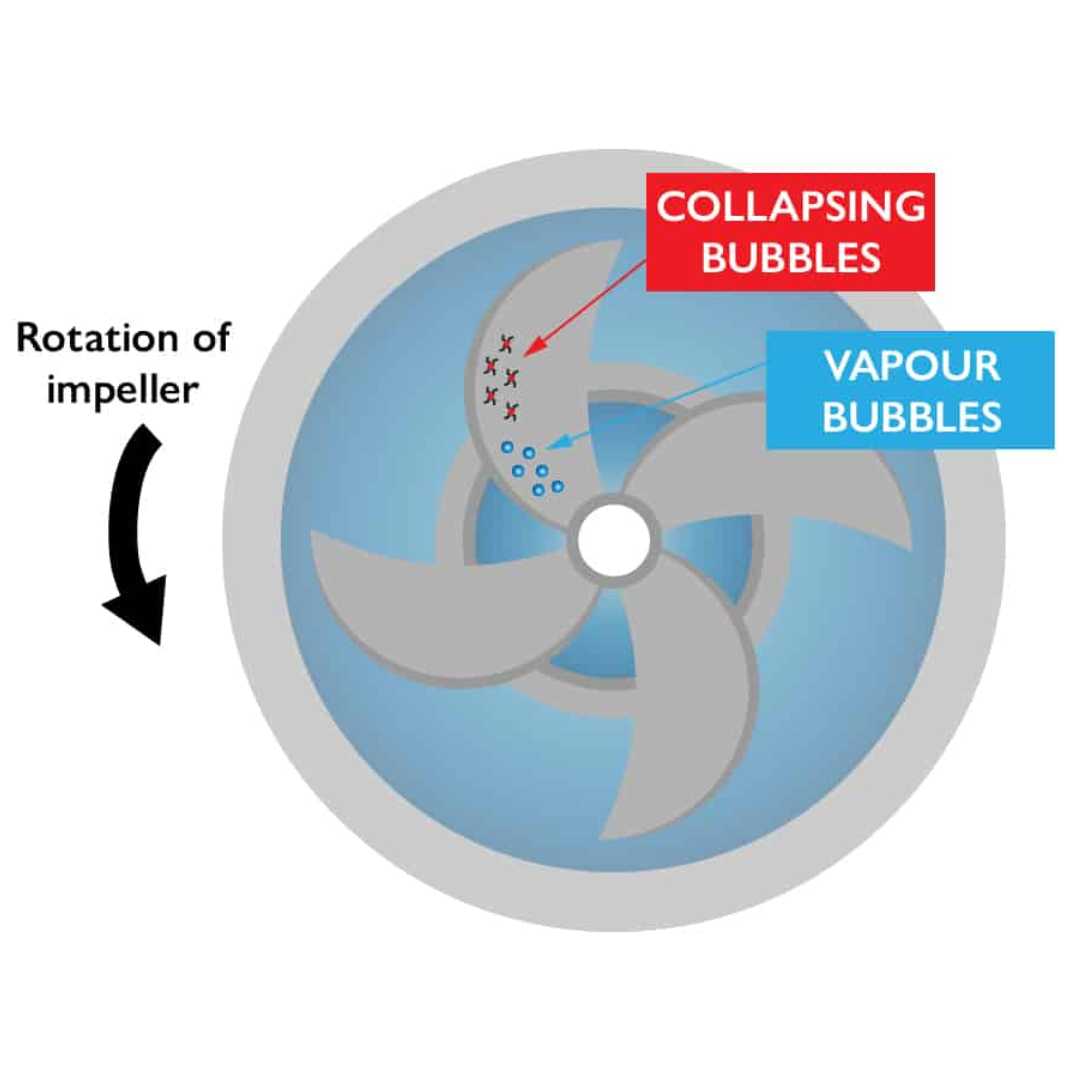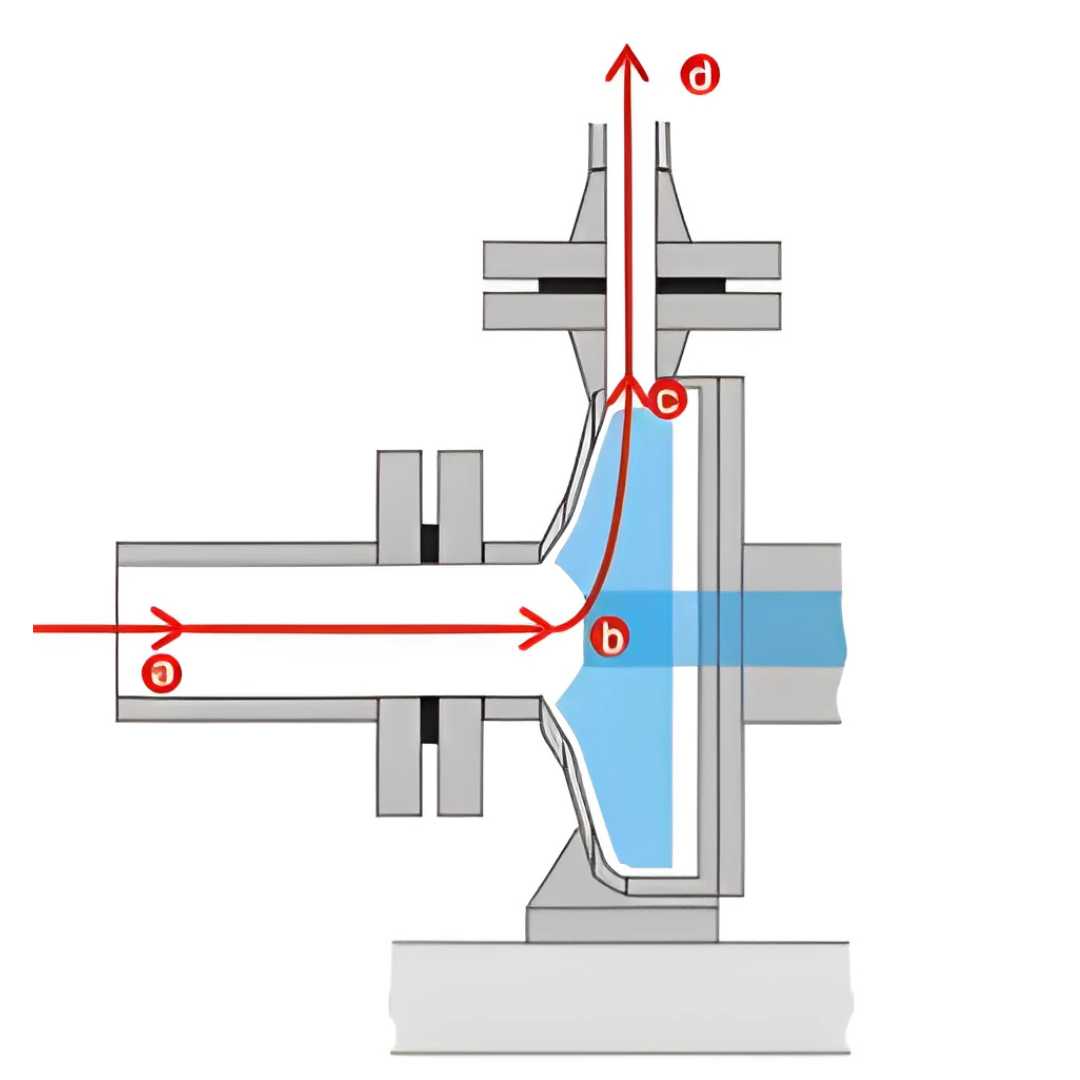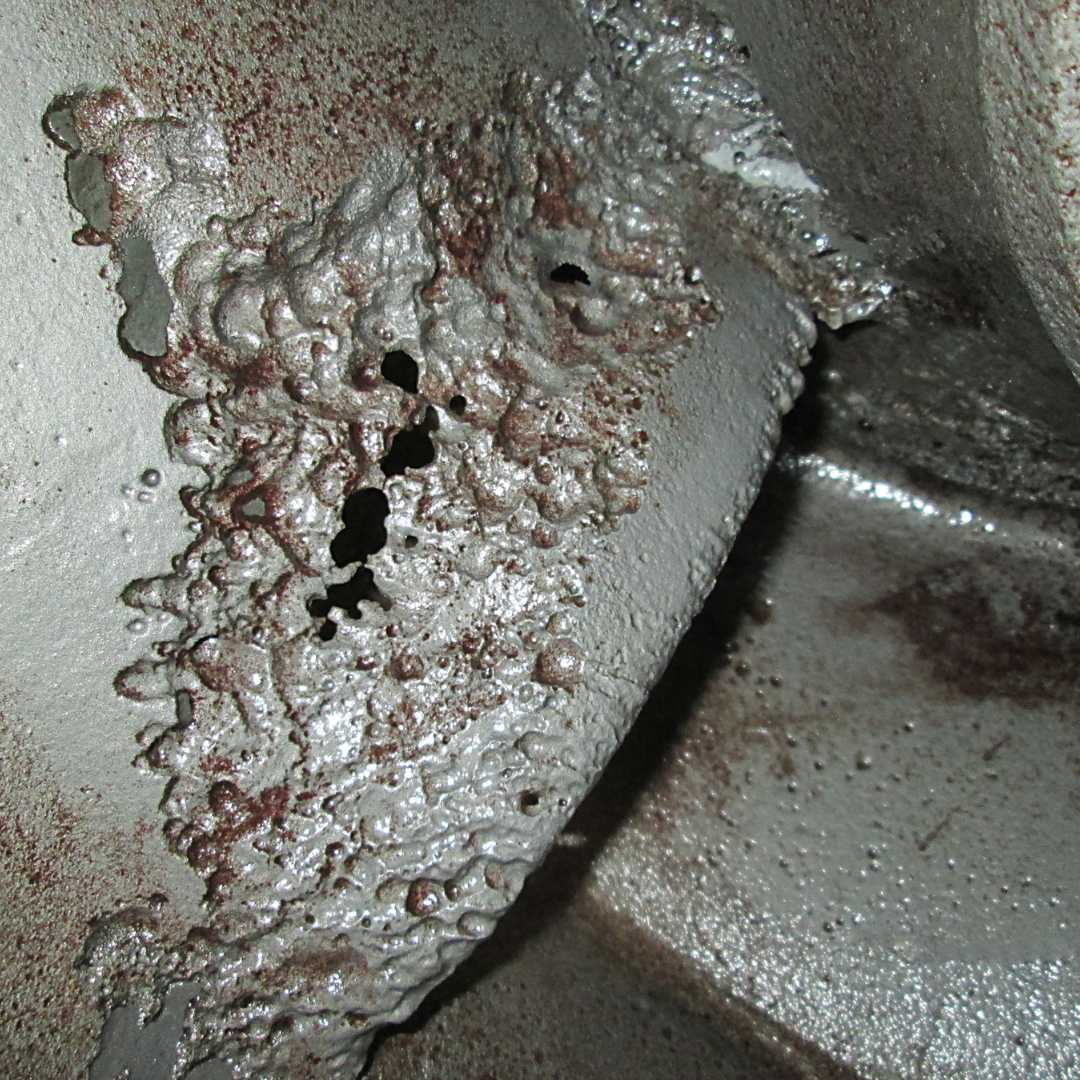Pump Cavitation Explained: The Causes, Symptoms, and Prevention of This Destructive Force
08/25/2025

Pump Cavitation Explained: The Causes, Symptoms, and Prevention of This Destructive Force
Have you ever stood next to a large industrial pump and heard a noise that sounds like gravel or marbles rattling violently inside the casing? That sound is not a minor annoyance or a sign of simple wear. It is the unmistakable sound of cavitation, one of the most destructive and misunderstood phenomena in fluid dynamics. This is the sound of a pump actively destroying itself from the inside out. Cavitation can lead to rapid component erosion, seal failures, excessive vibration, and a drastic loss in performance. As of August 2025, modern system design and monitoring give us all the tools we need to avoid it. At Blackhawk Equipment, our goal is to ensure the high-quality pumps we supply, like those from Grundfos, have a long and reliable service life. That begins with designing systems that completely prevent cavitation.
The Physics of Cavitation: How Liquid Turns to Vapor and Back
To understand cavitation, it’s important to distinguish it from boiling. We boil a liquid by raising its temperature to its vapor pressure. Cavitation, however, occurs when we lower the pressure of the liquid down to its vapor pressure at a constant temperature.
-
The Formation of Vapor Bubbles:
-
In a centrifugal pump, the fluid rapidly accelerates as it is drawn into the center, or "eye," of the spinning impeller. This rapid acceleration creates a significant pressure drop. The eye of the impeller is the lowest pressure point within the entire pump.
-
If the pressure at the pump's suction inlet is already low, this additional pressure drop at the impeller eye can be enough to dip below the liquid's vapor pressure. At this point, the liquid can no longer remain in its liquid state and it "flashes" into millions of tiny vapor bubbles. The pump is now trying to pump a mixture of liquid and vapor.
-
-
The Destructive Collapse: A High-Pressure Implosion:
-
These newly formed vapor bubbles are then carried along the impeller's vanes toward the discharge port. As they move, they enter a region of rapidly increasing pressure. This high pressure causes the vapor bubbles to collapse violently and symmetrically—a process known as implosion.
-
This implosion is incredibly powerful. It creates highly localized shockwaves and micro-jets of liquid that can impact the impeller's surface with pressures exceeding 100,000 PSI. It is this continuous, microscopic hammering that physically blasts away small pieces of the impeller material, causing the characteristic pitting damage.
-
Recognizing the Symptoms: How to Identify Cavitation in Your System
A cavitating pump will give you several clear warning signs that should never be ignored:
-
Distinctive Noise: The primary symptom is the sound of "gravel" or "marbles" rattling in the pump. This is the sound of the shockwaves
 from the collapsing vapor bubbles.
from the collapsing vapor bubbles. -
Excessive Vibration: The violent implosions create significant hydraulic instability, leading to increased vibration levels that can be felt on the pump and piping and measured with diagnostic equipment.
-
Performance Degradation: You will see a noticeable drop in the pump's performance. The flow rate (GPM) and discharge pressure (head) will decrease and fluctuate because the pump is moving a less dense mixture of vapor and liquid instead of a solid column of incompressible fluid.
-
Physical Damage: During a maintenance inspection, the damage is unmistakable. You will find pitting and erosion on the impeller vanes, typically concentrated on the low-pressure side. Over time, this can lead to complete failure of the impeller.
The Core of Prevention: Understanding Net Positive Suction Head (NPSH)
Preventing cavitation is a core task of pump system design, and it all revolves around the critical concept of Net Positive Suction Head (NPSH).
-
NPSH Required (NPSHr):
-
This is a characteristic of the pump itself. It represents the minimum amount of pressure (or head) required at the suction port of the pump to prevent the liquid from flashing into vapor at the impeller eye. This value is determined by the pump manufacturer through physical testing and is provided on the pump's performance curve. NPSHr is not constant; it increases as the flow rate through the pump increases.
-
-
NPSH Available (NPSHa):
-
This is a characteristic of your system. It represents the absolute amount of pressure that your piping system delivers to the suction port of the pump. It's calculated based on your system's physical layout and the properties of the fluid being pumped. The formula is:
NPSHa = (Atmospheric Pressure) + (Static Suction Head) - (Friction Losses in Suction Piping) - (Vapor Pressure of the Liquid)
-
-
The Golden Rule of Cavitation Prevention:
-
The rule is simple and absolute: For stable, cavitation-free operation, the NPSH Available from your system must ALWAYS be greater than the NPSH Required by the pump. As a best practice, engineers should design for a healthy safety margin, ensuring that
NPSHais at least 3-5 feet (or 1-1.5 meters) greater thanNPSHrat the maximum expected flow rate.
-
Practical Engineering Strategies to Prevent Cavitation
All cavitation prevention strategies are aimed at achieving one of two goals: increasing your system's NPSHa or decreasing your pump's NPSHr.
-
Increasing NPSH Available (System-Side Solutions):
-
Increase the liquid level in your suction tank.
-
Raise the entire suction tank to a higher elevation relative to the pump.
-
Decrease the temperature of the liquid (this significantly lowers its vapor pressure).
-
Pressurize the surface of the liquid in the suction tank, if feasible.
-
Redesign the suction piping: This is often the most practical solution. Increase the pipe diameter, make the suction line as short and straight as possible, and minimize the number of elbows, valves, and fittings to reduce friction losses.
-
Regularly clean suction strainers and ensure valves are fully open.
-
-
Decreasing NPSH Required (Pump-Side Solutions):
-
Lower the pump's operating speed using a VFD. NPSHr is highly dependent on speed (it decreases with the square of the speed change), so slowing the pump down is a very effective solution.
-
Select a larger pump that can achieve the desired flow rate at a lower operating speed.
-
Choose a pump model specifically designed for low NPSHr applications.
-
For some applications, an inducer (a small axial impeller) can be fitted in front of the main impeller to boost the pressure at the eye.
-
Blackhawk Equipment: Your Partner in Reliable Pump System Design
Preventing complex issues like cavitation requires expertise in both the equipment and the system as a whole. Blackhawk Equipment is your engineering partner in this process. We help by:
-
Assisting with the proper selection of high-quality pumps from manufacturers like Grundfos, ensuring the pump's NPSHr curve is well-suited for your application.
-
Working with your engineering team to review system designs, calculate NPSHa, and proactively identify and mitigate cavitation risks before installation.
-
Providing complete solutions, including VFDs and advanced control strategies, to ensure your pumps operate in a stable, cavitation-free manner.
-
Offering expert troubleshooting and diagnostic services for existing systems that are already showing symptoms of cavitation.
Conclusion: Design for Success, Not Destruction
That rattling, gravelly noise coming from your pump is a serious cry for help. It is the sound of cavitation—a destructive but entirely preventable phenomenon. The solution is not to ignore the noise, but to address its root cause through sound engineering principles. By understanding the physics of cavitation and diligently applying the golden rule of ensuring sufficient Net Positive Suction Head (NPSHa > NPSHr), you can design and operate pumping systems that are quiet, efficient, and reliable for their entire service life.
Contact Blackhawk Equipment when designing your next industrial pumping system or troubleshooting a problematic one. Let our experts help you ensure your systems are engineered for success and protected from the destructive force of hydraulic shock and cavitation.
